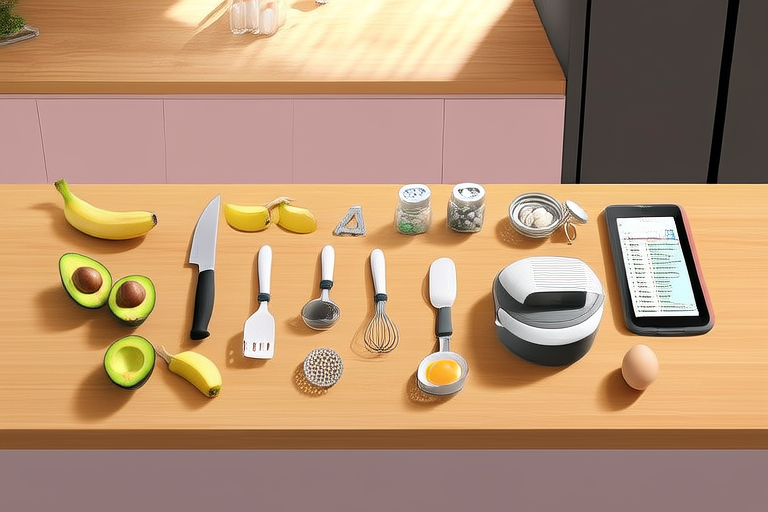10 Ingenious Cooking Hacks That Will Revolutionize Your Kitchen Experience
Introduction
Cooking is both an art and a science, and mastering it can transform your kitchen experience from mundane to magical. Whether you’re a seasoned chef or a beginner in the kitchen, these ingenious cooking hacks will help you save time, reduce waste, and elevate your culinary creations. From simple tricks to more advanced techniques, these tips will revolutionize the way you approach cooking.
1. Master the Art of Mise en Place
Mise en place, a French term meaning “everything in its place,” is a fundamental concept in professional kitchens. It refers to organizing all ingredients and tools before starting to cook. This method not only streamlines the cooking process but also reduces stress and ensures that everything is ready when needed.
How to Implement:
- Prepare Ingredients: Wash, chop, and measure all ingredients before you start cooking.
- Organize Tools: Have all necessary utensils, pots, and pans within easy reach.
- Label Containers: Use small containers for spices, sauces, and marinades to keep them organized.
By following this method, you’ll find yourself cooking with greater efficiency and less frustration. Plus, it’s easier to clean up when everything is already prepped!
2. Utilize Freezer Bags for Portion Control
Freezer bags are incredibly versatile and can be used for much more than just freezing leftovers. They are perfect for portion control, especially if you’re meal prepping or trying to eat healthier.
How to Use:
- Portion Out Meals: Divide soups, stews, and even pasta into individual portions for quick and easy reheating.
- Marinate Meats: Place meat in a freezer bag, add marinade, seal tightly, and massage the bag to distribute the marinade evenly.
- Store Herbs: Freeze fresh herbs like basil or cilantro in ice cube trays with water or olive oil for later use.
Using freezer bags for portion control not only helps in meal planning but also minimizes food waste by ensuring that each meal is perfectly sized.
3. Transform Your Pantry with DIY Seasonings
Creating your own seasonings at home is a great way to add flavor without breaking the bank. You can customize blends to suit your taste preferences and dietary restrictions.
How to Create DIY Seasonings:
- Basic Seasoning Blend: Mix equal parts salt, pepper, garlic powder, onion powder, and paprika.
- Herb Blend: Combine dried herbs like thyme, rosemary, and oregano for a Mediterranean twist.
- Spicy Blend: Add cayenne pepper, chili flakes, and smoked paprika for a kick of heat.
Storing these blends in airtight containers keeps them fresh and ready for use whenever you need a burst of flavor.
4. Optimize Your Cutting Board with Proper Techniques
Cutting boards are essential tools in any kitchen, but using them correctly can make a big difference in both safety and efficiency.
Tips for Using Cutting Boards:
- Use Different Boards: Designate one cutting board for raw meats and another for fruits and vegetables to prevent cross-contamination.
- Keep Boards Clean: Wash cutting boards thoroughly after each use, and replace them when they show signs of wear.
- Chop Efficiently: Practice proper knife skills to minimize waste and ensure uniform cuts.
By maintaining and using your cutting boards correctly, you’ll not only improve your cooking experience but also enhance food safety.
5. Make the Most of Leftovers
Leftovers don’t have to be boring or wasteful. With a little creativity, you can turn yesterday’s dinner into today’s lunch or even tomorrow’s snack.
Creative Uses for Leftovers:
- Soup Base: Use leftover vegetables, bones, and grains to create a flavorful broth.
- Sandwich Fillings: Repurpose roasted vegetables, meats, and cheeses into delicious sandwiches.
- Frittatas and Quiches: Incorporate leftover proteins and veggies into savory egg dishes.
Making the most of leftovers is not only economical but also environmentally friendly, reducing the amount of food waste in your household.
Practical Case Study: Meal Prepping with Mise en Place
Let’s walk through a practical example of how to implement mise en place during meal prepping. Imagine you’re preparing meals for the week ahead:
- Plan Your Meals: Decide what you want to eat throughout the week.
- Gather Ingredients: Purchase all necessary ingredients and bring them home.
- Prep Ingredients: Wash, chop, and measure all ingredients according to your recipes.
- Cook and Store: Cook each dish and store them in labeled containers for easy reheating.
By following these steps, you’ll streamline your meal prep process and enjoy home-cooked meals throughout the week without the hassle.
Conclusion
Incorporating these ingenious cooking hacks into your routine can significantly enhance your kitchen experience. From mastering mise en place to utilizing freezer bags for portion control, each tip offers practical solutions to common cooking challenges. By implementing these strategies, you’ll not only become a more efficient cook but also enjoy healthier, more flavorful meals.
Actionable Tip: Start by adopting one or two hacks at a time and gradually integrate them into your daily routine. Over time, you’ll see a noticeable improvement in your cooking skills and overall kitchen efficiency.
Happy cooking!
